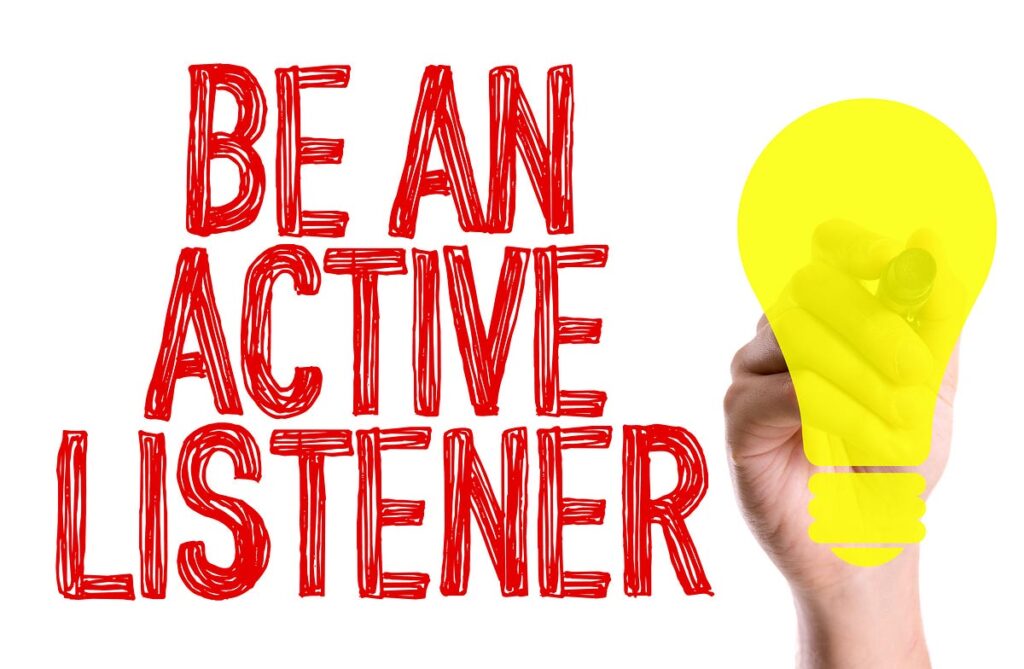
The modern consumer faces an abundance of choices when it comes to selecting businesses to patronize. For many individuals, a single negative encounter is all it takes to prompt exploration of alternative options available in the market.
According to Zendesk CX Trends Report, over 50% of consumers consider switching to a competitor with just one bad experience.
This underscores the importance of prioritizing exceptional customer service. By placing customer needs at the forefront and delivering exceptional service, businesses can foster loyalty, build trust, and ultimately, achieve sustainable success.
Table of Contents
Key Takeaways
- Identify and Avoid Mistakes: Recognize common customer service errors to prevent them in your interactions.
- Prioritize Customer Needs: Focus on understanding and meeting customer requirements promptly and effectively.
- Train Teams Thoroughly: Provide comprehensive training to equip your team with the skills needed to deliver exceptional service.
- Minimize Customer Handoffs: Reduce the number of times customers are transferred between departments to enhance their experience.
- Ensure Availability: Be accessible and responsive to customers to address their queries and concerns promptly.
- Offer Proactive Solutions: Anticipate customer needs and provide solutions before issues arise for a proactive approach to service.
Common Customer Service Mistakes

Lack of Active Listening
Customer service representatives often fail to engage in active listening, which leads to misunderstandings and dissatisfaction. By not fully understanding customer concerns, businesses risk losing valuable insights for improvement.
Overlooking Personalization
Neglecting personalization in customer interactions can make clients feel undervalued and generic. Tailoring responses and solutions to individual needs enhances the customer experience significantly.
Inadequate Problem Resolution
Failing to resolve issues promptly and effectively can escalate problems, causing frustration for customers. Swift and satisfactory resolutions are key to maintaining client satisfaction.
Insufficient Product Knowledge
Lack of product knowledge hinders agents from providing accurate information, leading to customer frustration. Regular training sessions and resources can improve staff expertise, boosting customer trust.
Ignoring Feedback Channels
Disregarding feedback channels prevents companies from understanding customer perceptions, hindering growth opportunities. Actively seeking and utilizing feedback helps identify areas for enhancement.
Not Addressing Mistakes
Customer satisfaction suffers when common mistakes go unaddressed. Customers may feel unheard, undervalued, and dissatisfied with the service, leading to negative reviews, decreased loyalty, and ultimately, lost business.
Recognizing these mistakes is crucial for enhancing overall service quality. By acknowledging shortcomings, companies can implement corrective measures, improve customer experiences, and foster long-term relationships with clients.
We’ve explored the detrimental impact of various customer service mistakes. Now, let’s delve into how to address these issues.
Prioritizing Customer Needs
Customer satisfaction hinges on placing their needs at the forefront. When a business prioritizes understanding and addressing these needs, it fosters loyalty and retention. Conversely, neglecting this aspect can lead to dissatisfaction and a decline in trust.

Effective Communication
Effective communication plays a critical role in achieving exceptional customer service. It’s the bridge that connects understanding customer needs with delivering solutions that truly satisfy them. Clear and concise communication ensures issues are identified promptly and addressed accurately. It also builds rapport with customers, demonstrating empathy towards their concerns.
Here’s how businesses can leverage effective communication to prioritize customer needs:
- Active Listening: Engaging attentively with customers allows you to grasp their concerns accurately.
- Timely Response: Addressing customer inquiries and issues promptly demonstrates a commitment to their needs.
- Personalization: Tailoring solutions and communication styles to individual customers creates a more positive experience.
- Empathy: Showing empathy towards customer problems builds trust and allows for a collaborative problem-solving approach.
- Feedback Loop: Encouraging customer feedback fosters continuous improvement and ensures communication strategies are aligned with evolving needs.
Offering Proactive Solutions
Anticipating customer needs is crucial in customer service. By understanding customer preferences and behavior patterns, businesses can predict potential issues. This proactive approach allows companies to address concerns before they escalate.
Examples of Proactive Approaches:
- Sending personalized product recommendations based on previous purchases.
- Providing troubleshooting guides for common product issues.
- Offering proactive updates on order status to prevent customer inquiries.
- Integrating self-service options such as FAQ pages, chatbots, or tutorials empowers customers to find solutions independently.
Investing in Training

Regular Training
Customer service teams play a pivotal role in shaping the overall customer experience. Regular training is essential to keep the team members updated on the latest trends and techniques in customer service.
Training sessions should cover various aspects, including skills development, handling difficult customers, and utilizing tools effectively. By investing in regular training, companies can equip their teams with the necessary knowledge to navigate diverse customer interactions successfully.
Comprehensive Programs
To avoid common customer service mistakes, companies must establish comprehensive training programs for their support teams. These programs should focus on improving communication skills, empathy, and problem-solving abilities.
A well-rounded training program should also incorporate scenario-based learning to simulate real-world situations that representatives might encounter. This approach helps employees develop critical thinking skills and enhances their ability to provide effective solutions to customers.
Competitor Analysis
One effective strategy in training customer service teams is to analyze the approaches taken by competitors. By studying how other companies handle customer interactions, organizations can identify best practices and areas for improvement within their own teams.
Companies can leverage this analysis to differentiate themselves from competitors by offering unique and personalized customer experiences. This proactive approach not only benefits customers but also strengthens the company’s position in the market.
Minimizing Client Transfers

Streamlining Communication
Effective communication plays a crucial role in minimizing client transfers. By ensuring that all team members are well-informed and equipped to handle various customer inquiries, companies can significantly reduce the need for transferring clients between different departments.
Implementing regular training sessions focused on enhancing communication skills can empower employees to address a wider range of issues without escalating them to other teams unnecessarily.
Utilizing Comprehensive CRM Systems
Utilizing comprehensive Customer Relationship Management (CRM) systems can streamline communication channels and provide agents with quick access to relevant customer information. These systems enable representatives to view past interactions, preferences, and previous concerns, allowing them to resolve issues promptly without involving additional departments.
By centralizing customer data within a unified platform, companies can enhance service efficiency and minimize client transfers effectively.
Offering Multifaceted Support Options
Providing customers with multifaceted support options such as live chat, email, phone support, and self-service portals can help in reducing the necessity for client transfers. By offering diverse channels through which customers can seek assistance, businesses empower clients to choose the most convenient method based on their preferences.
This approach not only minimizes the chances of clients being transferred between departments but also enhances overall customer satisfaction by providing flexibility in accessing support services.
Prioritizing Availability
Responsive Communication
Responsive customer service is vital for minimizing client transfers and fostering satisfaction. Support agents must prioritize being readily available to customers through various communication channels (phone, email, live chat) to ensure timely assistance. Customers appreciate quick responses and solutions to their inquiries. When agents are readily available, it builds trust and enhances the overall customer experience.
Ownership Mentality
Encouraging an ownership mentality empowers agents to take responsibility for resolving customer issues. This reduces the need for transferring calls and ensures faster resolutions. Owning customer concerns fosters a sense of accountability and dedication towards providing efficient service.
Communicating Effectively
Clear Communication
Effective communication is crucial in customer service. Using appropriate communication channels and practicing active listening can significantly enhance customer satisfaction.
Conversations with customers should focus on understanding their needs and showing empathy towards their concerns. Clear and concise conversation ensures that issues are addressed promptly and accurately.
Tips for Improvement
To enhance communication skills, customer service representatives can employ various techniques. Building rapport with customers fosters a positive relationship and improves overall experience.
Utilizing technology to streamline interactions and provide quick solutions is essential in today’s fast-paced world. Continuous learning about new communication tools and strategies helps in delivering top-notch service.
- Practice active listening to truly understand customer concerns.
- Use positive language to convey empathy and build trust.
- Provide clear instructions and explanations to avoid confusion.
- Seek feedback from customers to improve communication processes.

Leveraging Customer Data for Personalized Experiences
By actively collecting and analyzing customer data, businesses gain valuable insights that inform targeted strategies for exceptional service.
Tailoring interactions based on customer data creates a unique and memorable experience for each customer. This tailored approach makes clients feel valued and understood, fostering higher satisfaction levels.
By analyzing customer data such as purchase history, browsing behavior, and feedback, companies can personalize interactions in several ways:
- Customized Recommendations: Similar to how companies like Amazon use data to personalize product recommendations, businesses can tailor suggestions based on individual preferences, enhancing the overall shopping experience.
- Personalized Communication: Targeted emails based on customer preferences or past purchases can significantly improve engagement. This might include sending birthday greetings, recommending complementary products, or offering loyalty program updates.
Enabling Personalization
Utilize Customer Data
Collect and analyze data points like purchase history, browsing behavior, and feedback. Utilize this information to identify individual customer preferences and tailor interactions accordingly
Omnichannel Support
Offer seamless personalized experiences across various channels like live chat, social media, and phone support. This ensures consistency and convenience for customers regardless of their chosen communication method.

Agent Training
Equip your customer service team with the skills necessary to deliver personalized service. This includes training on empathy, problem-solving, and utilizing customer data effectively.
Closing Thoughts
Building and maintaining exceptional customer service requires a continuous commitment to improvement. By consistently analyzing customer data, investing in employee training, and implementing proactive strategies, businesses can ensure they’re delivering experiences that consistently exceed expectations.
This commitment to excellence fosters long-term customer relationships, strengthens brand reputation, and positions businesses for long-term success in today’s competitive market.
Related Article:
The following article may contain the author’s opinions and interpretations of the subject matter. Any of the products, services, or platforms mentioned is not sponsored or affiliated.
Featured Image courtesy of pikisuperstar on Freepik
